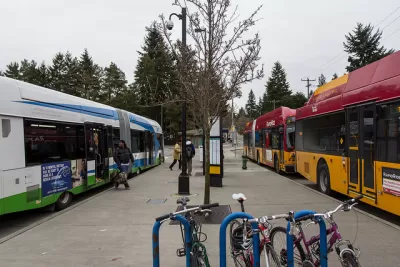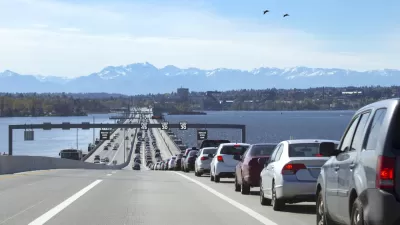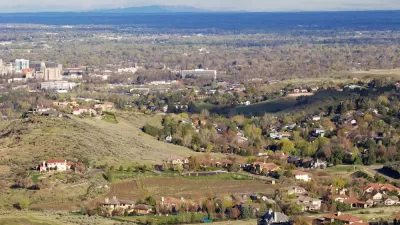The Vision 2050 plan, which charts the growth for King, Pierce, Snohomish, and Kitsap counties in Washington State, would focus almost all the growth meant to accommodate 1.8 million new residents inside urban areas.

"The Puget Sound Regional Council (PSRC) has put out a draft proposal for VISION 2050, the multi-county policy document to guide regional growth through the Year 2050," reports Stephen Fesler.
The VISION 2050 plan is the next permutation of VISION 2040, the current regional long-range growth plan, providing "a broad framework on how counties and cities should address a variety of planning topics, such as housing, the environment, economic development, infrastructure, transportation, development patterns, open space, and climate change," according to Fesler.
Vision 2050 "ultimately affects how local land use decisions are made through designation of Urban Growth Areas, zoning, and development regulations as well as how the PSRC allocates pass-through funding for things like local and regional transportation investments."
Fesler's big takeaway from the Vision 2050 draft is that the plan orients the region toward transit-oriented growth. "The Regional Growth Strategy in the plan would allocate 65% of regional population growth and 75% of regional job growth within Regional Growth Centers, Manufacturing/Industrial Centers, and near high-capacity transit. Only a small proportion of growth would be allocated to occur outside of Urban Growth Areas," according to Fesler.
FULL STORY: Puget Sound Regional Growth Draft Plan Centered Around Transit

Alabama: Trump Terminates Settlements for Black Communities Harmed By Raw Sewage
Trump deemed the landmark civil rights agreement “illegal DEI and environmental justice policy.”

Planetizen Federal Action Tracker
A weekly monitor of how Trump’s orders and actions are impacting planners and planning in America.

The 120 Year Old Tiny Home Villages That Sheltered San Francisco’s Earthquake Refugees
More than a century ago, San Francisco mobilized to house thousands of residents displaced by the 1906 earthquake. Could their strategy offer a model for the present?

In Both Crashes and Crime, Public Transportation is Far Safer than Driving
Contrary to popular assumptions, public transportation has far lower crash and crime rates than automobile travel. For safer communities, improve and encourage transit travel.

Report: Zoning Reforms Should Complement Nashville’s Ambitious Transit Plan
Without reform, restrictive zoning codes will limit the impact of the city’s planned transit expansion and could exclude some of the residents who depend on transit the most.

Judge Orders Release of Frozen IRA, IIJA Funding
The decision is a victory for environmental groups who charged that freezing funds for critical infrastructure and disaster response programs caused “real and irreparable harm” to communities.
Urban Design for Planners 1: Software Tools
This six-course series explores essential urban design concepts using open source software and equips planners with the tools they need to participate fully in the urban design process.
Planning for Universal Design
Learn the tools for implementing Universal Design in planning regulations.
Jessamine County Fiscal Court
Caltrans
Institute for Housing and Urban Development Studies (IHS)
City of Grandview
Harvard GSD Executive Education
Toledo-Lucas County Plan Commissions
Salt Lake City
NYU Wagner Graduate School of Public Service





























